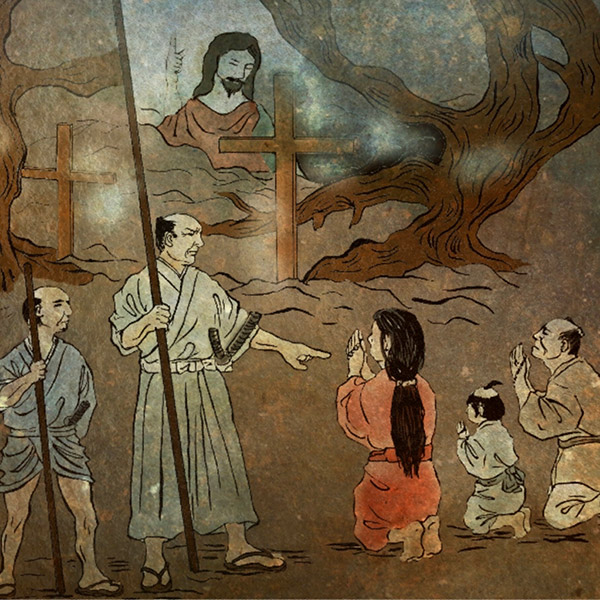- Funai domainoften hit by natural disasters
- The Funai domain was a domain that ruled the area of present-day Oita City, Oita Prefecture. Funai Castle was the domain office, and three families ruled the domain until the Meiji Restoration. Let's unravel the history of the Funai domain. Ruled by the Takenaka family and the Hineno family, the area around Funai was ruled by the Keicho 5

Funai CastleOita City, Oita Prefecture
- spring
- summer
- autumn
- winter
- TOP
- Kyushu
- Oita Prefecture
- Funai Castle
| Other name | Oita Castle, Niage Castle, Hakuji Castle |
|---|---|
| castle construction | 1597 |
| address | 4 Niagemachi, Oita City, Oita Prefecture |
- Transportation access to Funai Castle
- About 15 minutes walk from JR “Oita” station
HISTORYFunai Castle built at the mouth of the Oita River
Funai Castle is a flat castle built in Oita City, Oita Prefecture. Although it is currently located in the center of Oita City, when the castle was built it was at the mouth of the Oita River. It was built at the end of the Sengoku period, and during the Edo period it functioned as the domain office of the Funai domain. It has other names such as Oita Castle, Niage Castle, and Hakuji Castle. Let's unravel the history of Funai Castle.
- A castle built by Toyotomi Hideyoshi's confidant
- Construction of Funai Castle began in 1597 by a military commander named Nagataka Fukuhara. Fukuhara Nagataka appeared in history as a page head of Toyotomi Hideyoshi, and as one of Toyotomi Hideyoshi's close aides, he served as the defender of Nagoya Castle in Hizen Province during the Bunroku era and was involved in the construction of Fushimi Castle. I will advance my career. Since he took Ishida Mitsunari's younger sister as his legal wife, he and Ishida Mitsunari are brothers-in-law. At the time when Funai Castle was built, Nagataka Fukuhara was entrusted with the three districts of Oita, Hayami, and Kusu in Bungo Province in addition to his previous territory, making him a feudal lord with a wealth of 120,000 koku. At that time, Oita was ruled by a man named Nagamasa Hayakawa, who moved to a castle called Kitsuki Castle, and Nagataka Fukuhara was transferred to Oita.
The place Fukuhara Nagataka chose to build his castle was at the mouth of the Oita River at the time, on a piece of land called ``Kochi''. Along with the construction of the castle, the name of the place was changed to ``Nariage'' as it was considered bad luck. In 1599, most of the castle, including the watchtower-shaped four-story castle tower, was completed, but in that year, Fukuhara Nagataka became involved in the downfall of Ishida Mitsunari, and was forced to pay too much for the construction of Funai Castle. It was changed by Tokugawa Ieyasu for this reason. The following year, Fukuhara Nagataka sided with the Western army at the Battle of Sekigahara in 1600, and after being defeated, he became a monk and committed suicide. - Renovation by Shigetoshi Takenaka
- After Fukuhara Nagataka was transferred to Funai Castle, Hayakawa Nagamasa was recalled for a time and took over as castle owner, but he also sided with the Western army in the Battle of Sekigahara and the castle was taken away. Instead, Shigetoshi Takenaka entered Funai Castle for 35,000 koku. He was a nephew or cousin of Shigeharu Takenaka (Hanbei), who was famous as a staff member of Toyotomi Hideyoshi.
It is said that Shigetoshi Takenaka undertook major renovations to Funai Castle, adding the castle tower, hostage turret, sect turret, and Otemon gate, giving it its current form. The renovated Funai Castle was a natural stronghold with the sea to the north and the wetland area of the Oita River estuary to the east. Shigetoshi Takenaka is said to have developed not only the castle but also the castle town of Oita, and laid the foundation for the current development of Oita City. At the time of its completion, Funai Castle was one of the largest castles in Kyushu, with the Honmaru, Ninomaru, Yamazatomaru, and Kitanomaru arranged in an echelon style. However, they are frequently struck by natural disasters such as fires and earthquakes, and each time buildings are destroyed or destroyed. The fire in 1743 was particularly large, and most of the castle, including the castle tower, was destroyed. After this, the castle tower was not rebuilt until the Meiji Restoration. - Funai castle after Meiji era
- Throughout the Edo period, Funai Castle functioned as the domain office of the Funai clan, but in the Meiji era, the Oita Prefectural Office was built on the grounds of the castle in 1872. Along with this, Funai Castle gradually lost its former appearance as the moat was filled in and some of the buildings were destroyed. Furthermore, when the Seinan War broke out in 1882, when Saigo Takamori was capturing Kumamoto Castle, the Oita Prefectural Office was also attacked by Saigo Takamori's supporters known as the ``Nakatsu-tai.'' However, due to strong defenses such as the Sōmon turret, they were unable to capture it.
In 1945, at the end of the Pacific War, an air raid occurred on Oita, and many of the existing towers and gates were burned down.
In 1963, the castle ruins were registered as a historic site in Oita Prefecture, and in 1965, the East Maru Arrival Yagura, Double Yagura, Nishi Maru Double Yagura, and Otemon Gate were restored. Ta.
In 1996, the corridor bridge connecting Nishimaru and Yamazato Kuruwa was restored.
In 2003, the Oita Cultural Center, which was built on the site of the Nishinomaru site, was closed, and after excavation and maintenance, there is a plan to eventually restore the castle tower, but due to economic issues, it has not yet been completed. Not realized. Instead, from 2017 to 2019, the castle tower of Funai Castle was intermittently recreated using iron pipes and lit up with LED lights. The current Funai Castle ruins are a quiet park and famous as a cherry blossom viewing spot. Various events such as a wheelchair marathon are also held here.
Read about incidents related to Funai Castle
- Bungo collapseRound-up of hidden Christians in Oita
- After Christianity was banned during the Edo period, Hidden Christians believed in Christianity in order to hide from the shogunate. Such hidden Christians have been captured and suppressed through repeated raids by the Shogunate. One of them was the 3rd year of Manji (166

History of the Funai domain, with Funai Castle as the domain office
| Domain office | Funai Castle |
|---|---|
| old area | Bungo Province, Oita District, Funai |
| stone height | 21,000 koku |
| Fudai/Tozama | Sotosama/Fudai |
| main lord | Takenaka family, Hineno family, Dairyu Matsudaira family |
| Estimated population | 33,000 people (first year of the Meiji era) |









